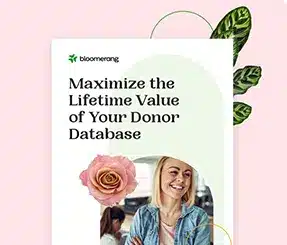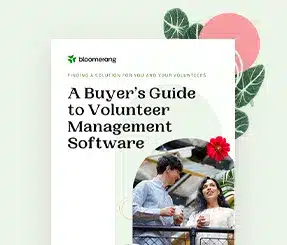7 Tips For Setting Up Your First Donor CRM


Full Platform Overview Chat With Us



Full Platform Overview Chat With Us




You did it! After years of juggling messy spreadsheets, your organization finally took the plunge and invested in a donor CRM. You sat through sales pitches, weighed your options, and signed the contract. Now… what?
Too often, organizations get stuck here. A CRM is just a tool—it won’t magically transform your fundraising unless you put it to work. But with a little effort upfront, you can make your CRM a game-changer for your donor relationships and fundraising strategy. Here’s how to set up your CRM to make sure it actually works for you.
The first step is getting your donor history into your CRM. But before you panic at the sight of years of spreadsheets, take a deep breath. You do not need to import everything. Start with the last five years of donation data. That’s usually enough to give you a solid picture of donor trends without drowning in unnecessary records.
If your data is already tidy and you want to go further back, great. But don’t let perfect be the enemy of done. Get the core information in and move forward.
Your CRM is only as useful as the data you put into it. If you don’t organize your data intentionally, you’ll find yourself struggling to pull the reports you need later.
To understand what you need, think about the questions you get asked frequently (especially if they currently feel hard to answer). E.g. how much did “X” campaign bring in last year? What percentage of our revenue comes from corporations? How many of our donors live in a certain area? This exercise will help you to understand what needs to be tracked and categorized and what doesn’t.
At a minimum, every donation record should clearly show where the money came from, where it’s going, and who gave it. Was it an individual gift, an event sponsorship, or a grant? Is it unrestricted, or is it designated for a specific program? Taking the time to define these categories early will save you endless frustration down the road.
Your CRM is the home for all your donation data, whether those donations come via checks, through your website, from cash left at your doorstep, wherever. It all needs to land in your CRM so you have a full view of your donor base.
When those checks and bags of cash hit your doorstep, record them in your CRM right away and issue a tax receipt. Hopefully, you’ve picked a CRM with a donation form that integrates with your website, so any online donations will be automatically issued a tax receipt and get entered in your database (please say you did!).
Even if you have a website integration feature, you’ll likely get money from other online sources like Benevity or Paypal that will need to be recorded. Set a recurring reminder for yourself once a month to check all the platforms you receive money from and add those donations to your CRM. This may need to be done manually, or some platforms will provide you with a template that can be exported from the platform and imported into your CRM.
Your CRM isn’t just for donor stewardship—it’s also a financial record, and it needs to align with your accounting system. That means working closely with your bookkeeper or finance team to reconcile CRM entries with your bank deposits on a regular basis. If the numbers don’t match, something’s off, and it’s better to catch errors sooner rather than later.
You can’t use your new CRM alone! Other people in your organization will need to use it, and they’ll need clear guidance on how to do it correctly. Instead of writing long-winded manuals no one will read, try recording short screen-share videos using a tool like Loom. Show people how to enter data, pull reports, and follow your organization’s processes. Videos are faster to create, easier for others to follow, and ensure consistency in how the system is used.
You’re not going to get everything right the first time, and that’s okay. As you start using the system, you’ll discover better ways to categorize information, streamline processes, and pull useful reports. If something isn’t working, change it. Most CRMs have a bulk edit feature, so you won’t have to fix things one record at a time. The key is to stay flexible and let your CRM evolve with your organization’s needs.
Test things out in your database and play around! Make a dummy record for you to test on, add fake donations (don’t forget to delete them when you’re done) and send test emails. Don’t be afraid to poke around and explore what this new tool can do for you.
A well-set-up CRM can be one of your most powerful tools for building donor relationships and strengthening your fundraising efforts. But like any tool, its value comes from how you use it. Taking the time to organize your data, keep your financial records aligned, and train your team will ensure that your CRM works for you—not the other way around.
And remember, no system is set in stone. Stay flexible, adjust as you go, and don’t be afraid to explore new features. The more comfortable you get with your CRM, the more it will support your organization’s growth for years to come.

Comments